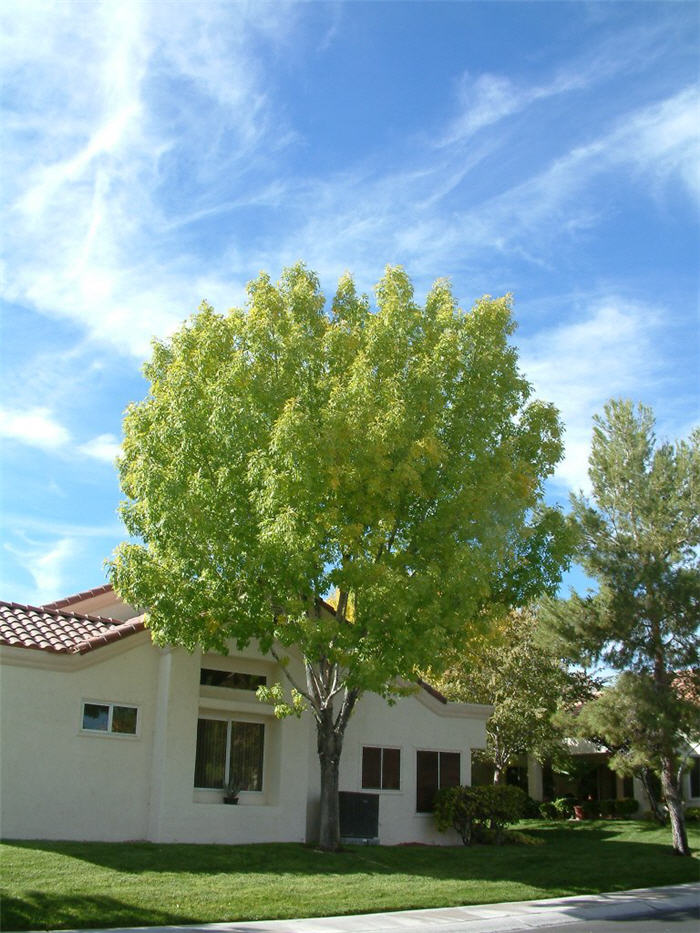| Botanical Name: Fraxinus velutina | |
| Common Name: Arizona or Velvet Ash |

-
Anatomy
-
Culture
-
Design
Plant Type
Tree
Height Range
25-40'
Flower Color
n/a
Flower Season
n/a
Leaf Color
Green
Bark Color
Grey
Fruit Color
Green
Fruit Season
n/a
Sun
Full, Half
Water
Low
Growth Rate
Moderate
Soil Type
Sandy, Clay, Loam, Rocky, Unparticular
Soil Condition
Average, Rich, Poor, Well-drained, Dry
Soil pH
Neutral, Basic
Adverse Factors
n/a
Design Styles
Mediterranean, Ranch, Spanish
Accenting Features
Fall Color, Specimen
Seasonal Interest
Spring, Summer, Fall
Location Uses
Background, Lawn, Parking Strip, Street Tree
Special Uses
Shade Tree
Attracts Wildlife
Birds
Information by: Stephanie Duer
Photographer: Modesto Jr. College
Photographer: Modesto Jr. College
-
Description
-
Notes
Velvet Ash has a rounded rounded canopy that provides deep shade during the summer, but has an open winter shiloutte in the winter, allowing for winter light. It has glossy, bright green, finely serrated leaves that turn yellow and gold in the fall. The bark is grey and becomes furrowed with age. Grows to about 30 to 40 feet tall and 30 feet wide.
WARNING: Emerald Ash Bore have been identified in Colorado; this is a highly destructive invasive pest and has caused significant damage to ash trees throughout the eastern United States. Go to utahpests.usu.edu for more information.
Tolerant of high pH soils and heat. Like other ashes, the leaves are pinnately compounded, so when the leaves fall, the little leaf stems also drop, resulting in a very clean winter shiloutte and less twigginess to catch snow. Native to Texas, southern New Mexico, and Nevada. Hardy to 0 degrees. Clusters of pale green winged seeds (on female trees) are enjoyed by birds.